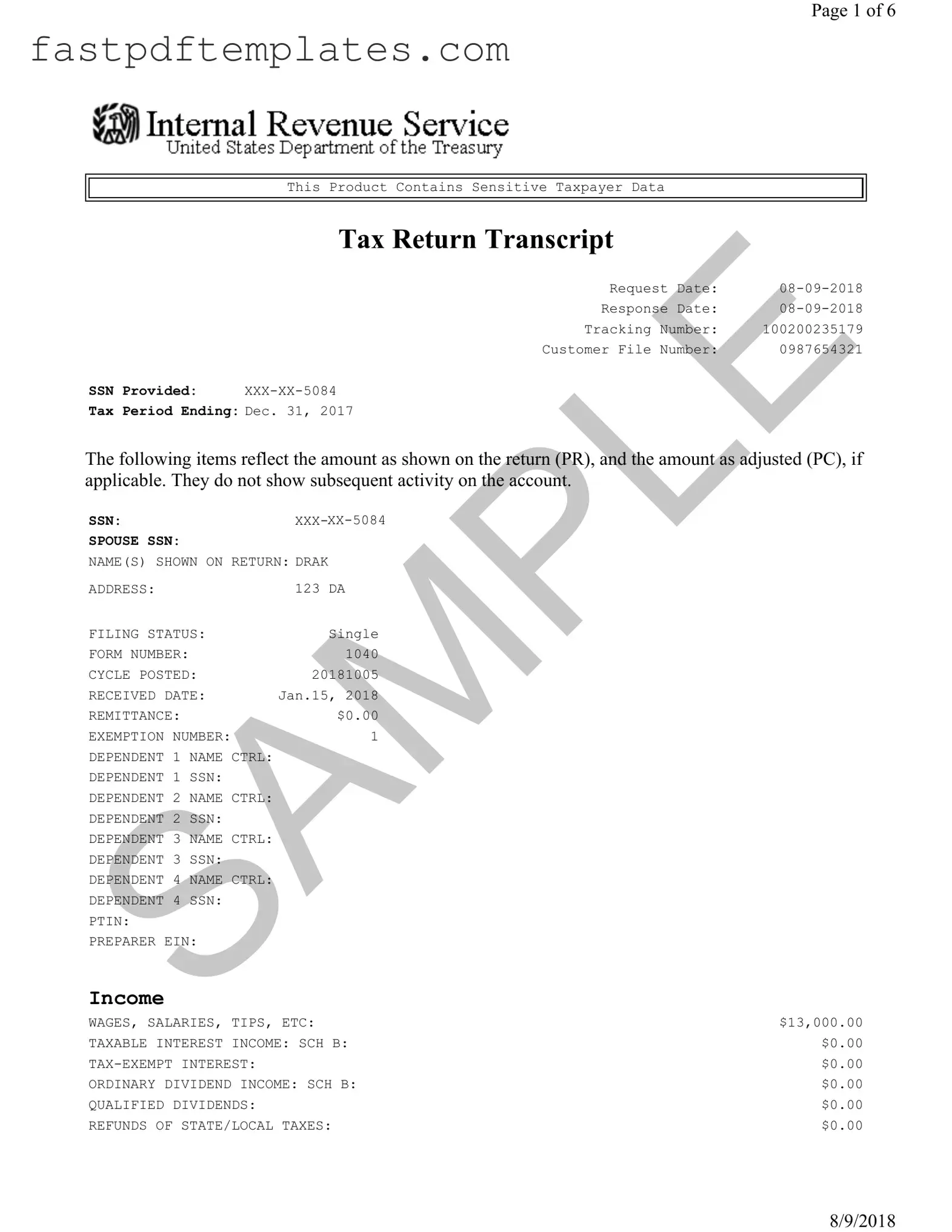The IRS Form 1040 is the standard individual income tax return form that most taxpayers use to report their annual income. Like the Sample Tax Return Transcript, it provides a comprehensive overview of an individual's financial situation for a specific tax year. Both documents include details about income sources, deductions, and credits, allowing taxpayers to understand their tax obligations and potential refunds. However, the Form 1040 is the original submission, while the transcript serves as a summary of that information as recorded by the IRS.
The IRS Form 1040A is a simplified version of the standard Form 1040. It is designed for taxpayers with less complex financial situations. Similar to the Sample Tax Return Transcript, it summarizes income, adjustments, and tax credits. Both documents help taxpayers gauge their tax liabilities and refunds. However, the 1040A is a filing form, while the transcript is a record of what was submitted and processed by the IRS.
The IRS Form 1040EZ is the simplest tax return form available for individuals with straightforward tax situations. It requires less information than the 1040 or 1040A. Like the Sample Tax Return Transcript, it provides a quick snapshot of income and tax obligations. While both documents serve to inform the taxpayer about their financial situation, the 1040EZ is a filing form, and the transcript is a summary of the processed return.
The IRS Form W-2 is a wage and tax statement provided by employers to employees. It details the income earned and taxes withheld throughout the year. The Sample Tax Return Transcript includes similar income information but is broader, encompassing all income sources and tax credits. Both documents are crucial for taxpayers to accurately report their income, but the W-2 is specific to employment income, while the transcript covers all reported income.
The IRS Form 1099 is used to report various types of income other than wages, salaries, and tips. This form includes income from freelance work, interest, dividends, and other sources. Like the Sample Tax Return Transcript, it provides information necessary for tax reporting. However, the 1099 focuses on specific income types, while the transcript offers a comprehensive view of all income and tax calculations for the year.
The IRS Form 4506-T is a request for a transcript of a tax return. This document is similar to the Sample Tax Return Transcript in that it allows individuals to obtain their tax data from the IRS. Both documents are used for verifying income, but the 4506-T is a request form, whereas the transcript is the actual record of tax information.
The IRS Form 4868 is an application for an automatic extension of time to file a tax return. It provides an estimate of the taxpayer's expected tax liability. The Sample Tax Return Transcript, on the other hand, reflects the actual amounts reported on the return. While both documents relate to the filing process, the 4868 is about requesting more time, while the transcript shows what was submitted.
The IRS Form 8862 is used to claim the Earned Income Credit after it was disallowed in a previous year. This form requires detailed information about income and dependents. Similar to the Sample Tax Return Transcript, it provides essential data needed for tax calculations. However, the 8862 is specifically for claiming a credit, while the transcript summarizes the entire tax situation for a given year.
The IRS Form 8888 allows taxpayers to split their tax refund into multiple accounts. This form includes information about the taxpayer's bank accounts and the amounts to be deposited. While the Sample Tax Return Transcript includes the total refund amount, the 8888 is focused on how that refund will be allocated. Both documents are important for managing tax refunds but serve different purposes in the tax process.
The IRS Form 8863 is used to claim education credits for qualified tuition and related expenses. It provides details about educational expenses and the credits available. The Sample Tax Return Transcript includes information about any education credits claimed, but the 8863 is specifically focused on education-related tax benefits. Both documents play a role in helping taxpayers maximize their deductions and credits.

